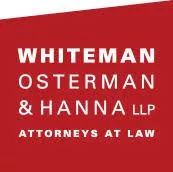- with readers working within the Media & Information industries
- within Tax topic(s)
- in United States
- within Tax and Real Estate and Construction topic(s)
- with readers working within the Accounting & Consultancy, Advertising & Public Relations and Transport industries
The "One Big Beautiful Bill Act" (OBBBA), signed into law on July 4, 2025, has ushered in a significant evolution for the Qualified Opportunity Zone (QOZ) program. Originally established in 2017 to spur economic development in distressed communities, the QOZ incentive has now been made permanent and refined. This post will explore the key changes brought by the OBBBA and what they mean for both potential investors and the communities these provisions aim to serve.
A Permanent Future for Opportunity Zones
Perhaps the most impactful change under the OBBBA is the permanent extension of the QOZ program. Gone is the December 31, 2026, sunset date for new investments. This long-term commitment provides much-needed stability and clarity for investors looking to deploy capital in these designated areas.
Under the OBBBA provisions, every 10 years, state governors will propose new qualified opportunity zones to be certified by the Treasury Secretary. The effective date for those new QOZ designations being on July 1, 2026 (and every 10 years thereafter). Once certified, each census tract will remain a QOZ for 10 years beginning January 1 of the following year. The law also updates the acquisition window for QOZ Business Property to match the new cycle. The December 31, 2017, date will now reset with each new cycle.
Key Changes for Investors
- Rolling Gain Deferral: For investments made after December 31, 2026, the temporary deferral of capital gains now operates on a rolling five-year basis. Gains deferred through investment in a Qualified Opportunity Fund (QOF) will be recognized on the fifth anniversary of the investment date, rather than a fixed end-date. This offers greater flexibility for investors.
- Streamlined Basis Step-Up: The OBBBA simplifies the basis step-up benefit. A 10% basis step-up will apply for investments held in a QOF for at least five years. The previous incremental step-ups (at 5 and 7 years) have been eliminated, capping the benefit at 10% for investments made after December 31, 2026.
- Enhanced Rural Focus: The OBBBA provides greater incentives for investments in rural areas. Qualified Rural Opportunity Funds (QROFs), which have at least 90% of assets invested in rural QOZs, are eligible for a 30% basis step-up after 5 years (instead of the standard 10%). Additionally, the "substantial improvement" threshold for properties in rural QOZs is reduced, making it easier for projects to qualify. Under this new threshold, only an excess of 50% of adjusted basis must be reinvested in property improvements in the QROF, as opposed to 1005 of adjusted basis in standard QOFs.
- Increased Reporting Requirements: The OBBBA introduces more stringent reporting requirements for QOFs and QOZ businesses, aiming to enhance transparency and track the program's impact.
Impact on Communities
The changes under the OBBBA aim to refine and improve the QOZ program's effectiveness in stimulating genuine economic growth in underserved areas.
- More Targeted Eligibility: The definition of "low-income communities" has been tightened. Census tracts will now qualify as QOZs only if their median family income does not exceed 70% of the state or metropolitan median (down from 80%). This change, along with the elimination of the contiguous tract designation, is designed to focus investment on truly distressed areas.
- Emphasis on Rural Revitalization: The dedicated incentives for rural investments signal a concerted effort to direct capital to these often-overlooked areas. This could lead to increased job creation, infrastructure development, and improved access to resources in rural communities.
- Greater Accountability: The increased reporting requirements are intended to provide more data on how QOZ investments are impacting communities, allowing for better assessment of the program's success in achieving its stated goals of economic growth and job creation.
What This Means
For investors with recognized capital gains, the QOZ program, post-OBBBA, presents a compelling opportunity for tax-advantaged investment with the potential for significant long-term returns. The permanence of the program and the rolling deferral provide greater planning certainty.
For community stakeholders, the refined eligibility criteria and the focus on rural areas could lead to more impactful and equitable development.
As with any investment, thorough due diligence is crucial. Understanding the specific changes introduced by the OBBBA, along with the fundamentals of the underlying investment and the track record of the Qualified Opportunity Fund sponsor, will be key to navigating this new landscape.
The content of this article is intended to provide a general guide to the subject matter. Specialist advice should be sought about your specific circumstances.


